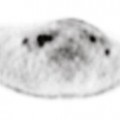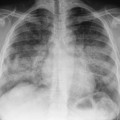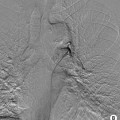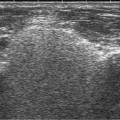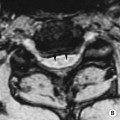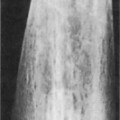• The guidewire should never be advanced without fluoroscopic guidance and never against resistance • Groin haematoma formation: minimized by adequate post-procedure puncture site compression • False aneurysm formation: this occurs where there has been inadequate haemostasis and is more likely to occur with a low CFA puncture where the artery cannot be compressed against the femoral head • Arteriovenous fistula formation: this is uncommon with a CFA puncture but is more likely with a SFA puncture (as the femoral vein lies deep to it) • Thrombosis: this is more likely if the artery is severely diseased at the puncture site • Arterial dissection following angioplasty: this usually occurs with an antegrade approach • Distal microembolization: this follows thrombus or atheroma breaking off from the vessel wall • As well as direct pressure applied to the puncture site, other alternatives are available: • Suture-mediated closure devices (e.g. Perclose): the technique relies on a complex mechanism whereby 2 needles pass through the vessel wall adjacent to the puncture site and then retrieve a suture loop • Collagen plug and anchor (e.g. Angio-Seal): a collagen footplate is deployed within the arterial lumen • High-flow catheters with end and side holes are used for central vessels (e.g. the aorta) • Cobra: visceral and peripheral angiography • Sidewinder: visceral and aortic arch angiography • Berenstein: this has an end hole only and an angled tip • Headhunter: this has a forward-facing primary curve (± side holes)
Interventional vascular radiology techniques
INTERVENTIONAL VASCULAR RADIOLOGY TECHNIQUES
VASCULAR ACCESS
Landmarks for a fluoroscopic-guided puncture
 Puncturing too high (above the inguinal ligament): this increases the risk of bleeding and also means that direct pressure to maintain haemostasis is difficult
Puncturing too high (above the inguinal ligament): this increases the risk of bleeding and also means that direct pressure to maintain haemostasis is difficult
 Puncturing too low (e.g. into the superficial femoral artery): this increases the risk of false aneurysm and arteriovenous fistula formation
Puncturing too low (e.g. into the superficial femoral artery): this increases the risk of false aneurysm and arteriovenous fistula formation
Potential complications
 the treatment options include US-guided compression, thrombin injection and surgical repair
the treatment options include US-guided compression, thrombin injection and surgical repair
 retrograde dissections are usually self-limiting
retrograde dissections are usually self-limiting
Haemostasis
 the suture loop is then pulled through and out of the skin (it closes the puncture site as it is tightened and a slipknot is formed)
the suture loop is then pulled through and out of the skin (it closes the puncture site as it is tightened and a slipknot is formed)
 this is attached to an anchor on the external side of the arterial lumen (this has collagen wadding which forms a plug at the puncture site)
this is attached to an anchor on the external side of the arterial lumen (this has collagen wadding which forms a plug at the puncture site)  the collagen footplate dissolves after approximately 10 weeks
the collagen footplate dissolves after approximately 10 weeks
CATHETERS
 low-flow catheters with end holes only are used for selective arterial catheterization
low-flow catheters with end holes only are used for selective arterial catheterization
Selective catheters
 it is useful for anterior aortic arch vessels
it is useful for anterior aortic arch vessels
 it is used for head and neck vessels
it is used for head and neck vessels
Interventional vascular radiology techniques


 the arterial entry point is at the mid-femoral head level
the arterial entry point is at the mid-femoral head level  puncture is usually achieved under direct US guidance
puncture is usually achieved under direct US guidance


 it has a large end hole and smaller side holes with a pigtail loop and measures approximately 15mm in diameter
it has a large end hole and smaller side holes with a pigtail loop and measures approximately 15mm in diameter